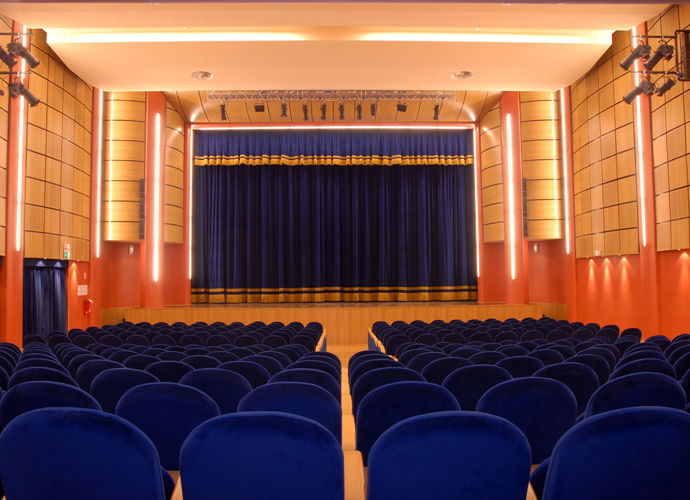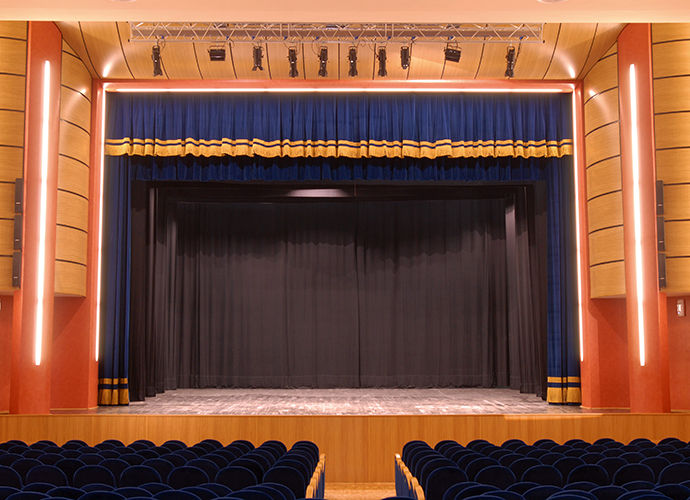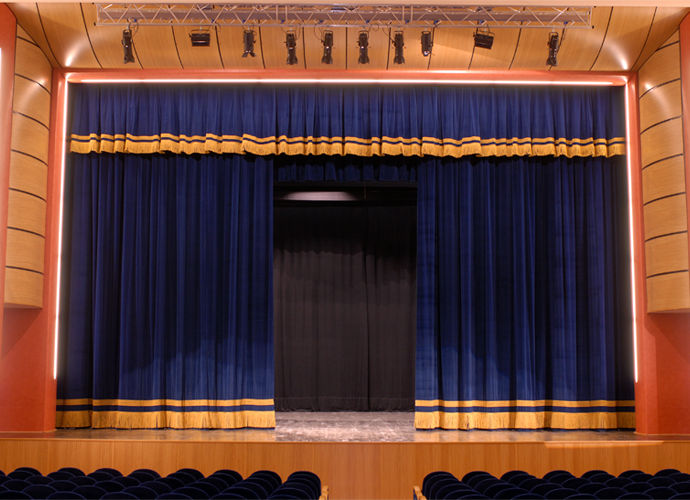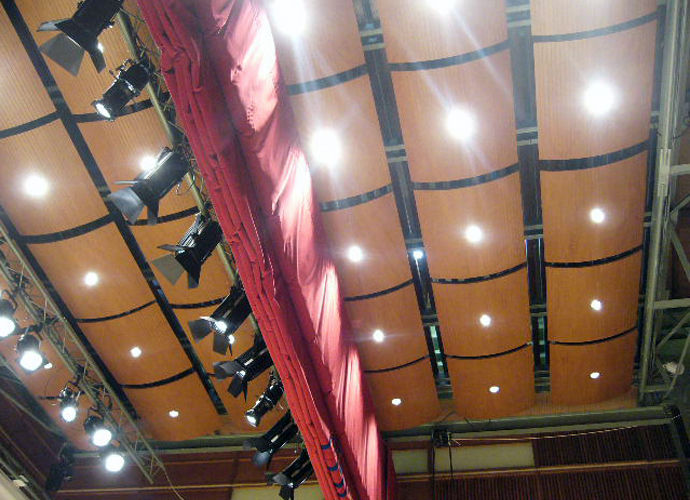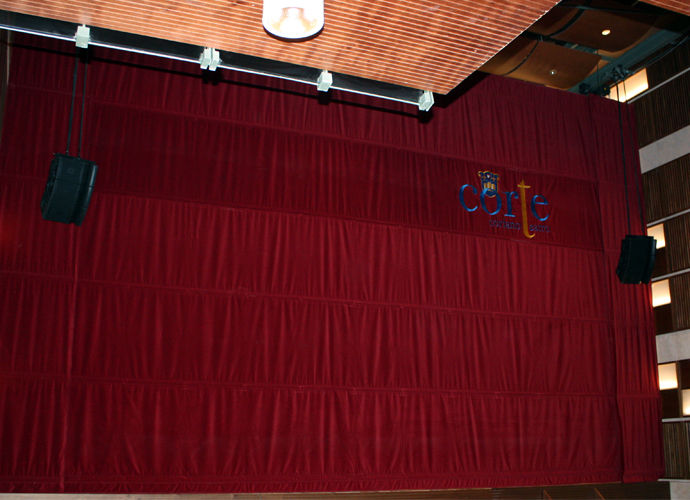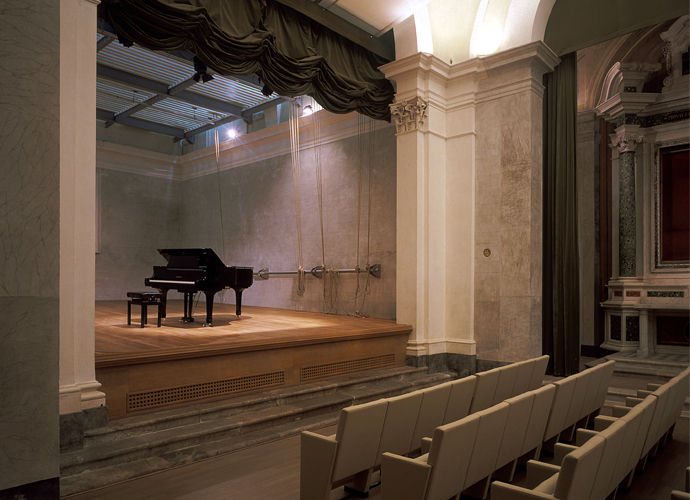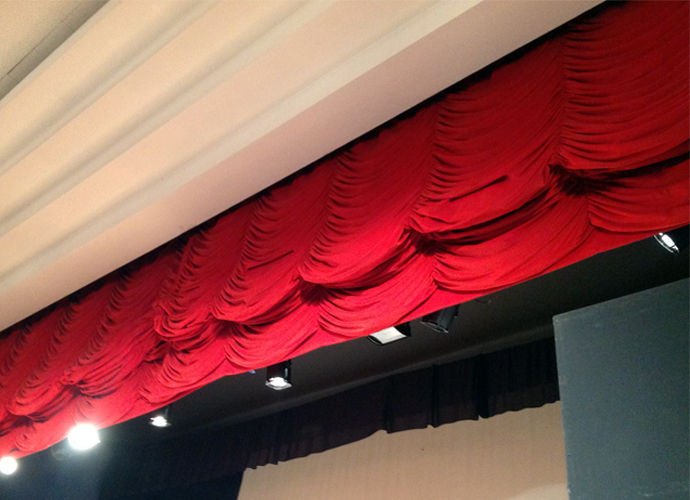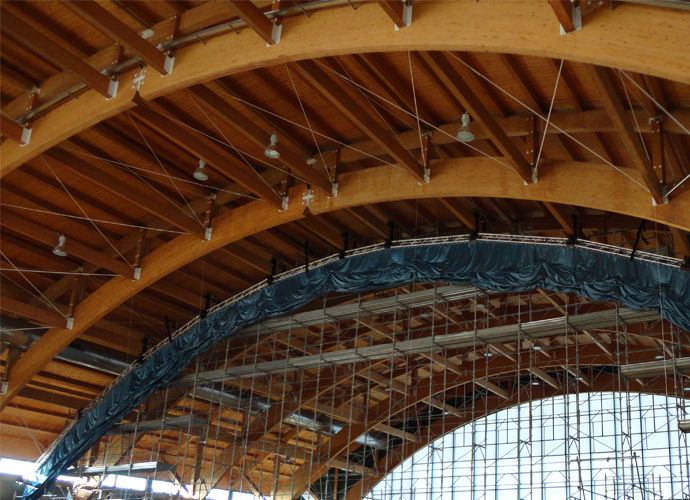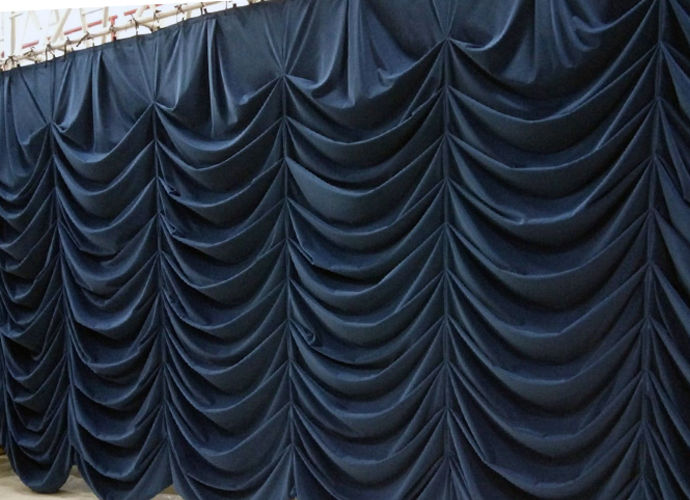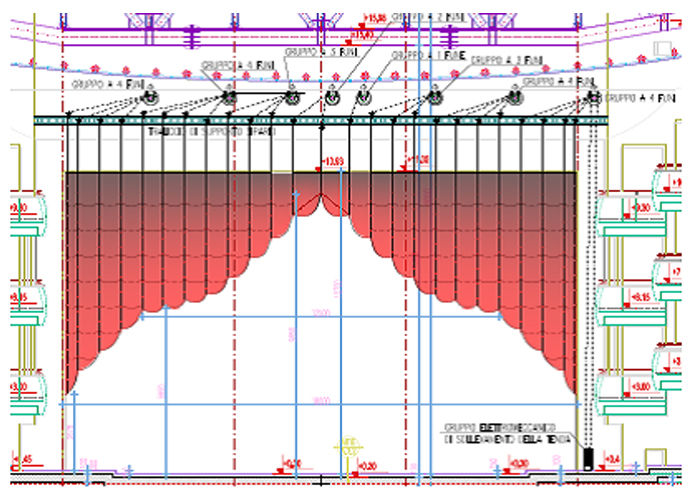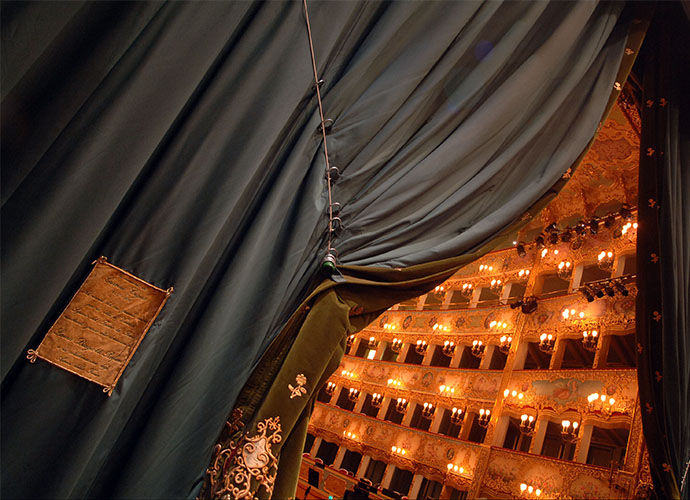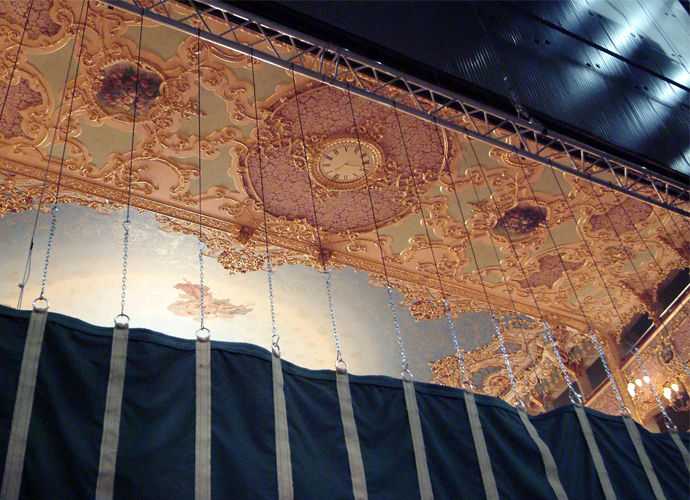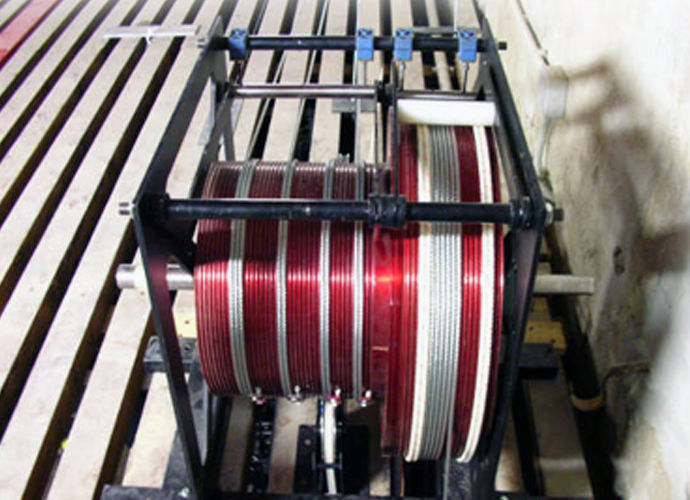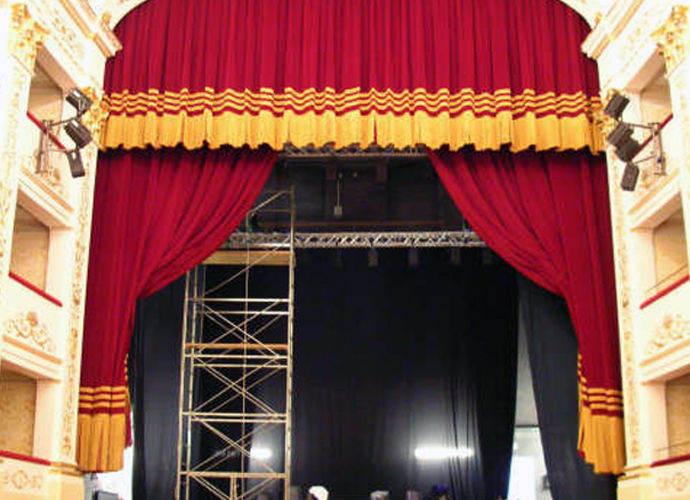Stage curtains
CURTAINS
traveller curtain greek opening
The curtain is opened in the middle and works like a double window curtain. The movement is guaranteed by a rope and a double track which is 50 cm surmounted at the center, to allow the two parts of the curtain to overlap and close the scene. The track can be fixed to the proscenium wall or joined to the grig by means of metal ropes. This type of curtain is suitable for small theaters, for theaters without grids, or that have low ceilings, as well as theaters with proscenium very large that do not need special openings for their performance shows.
italian opening curtain
The curtainis opened from the center: two cords, starting from the central edges of the velvet at a height from the bottom of 2.00 m about and ending at the side tops, pass through a row of rings, fixed to the fabric and forming a semicircle. Pulling the two strings up the curtain is colelcted until the proscenium is free. The upper part is normally connected to a metal support truss. According to the height of the curtain and of the portion of curtain that you want to see on the scene, they are predisposed a coated chains to the upper edge to facilitate the collection of the curtain and reduce the encumbrance.
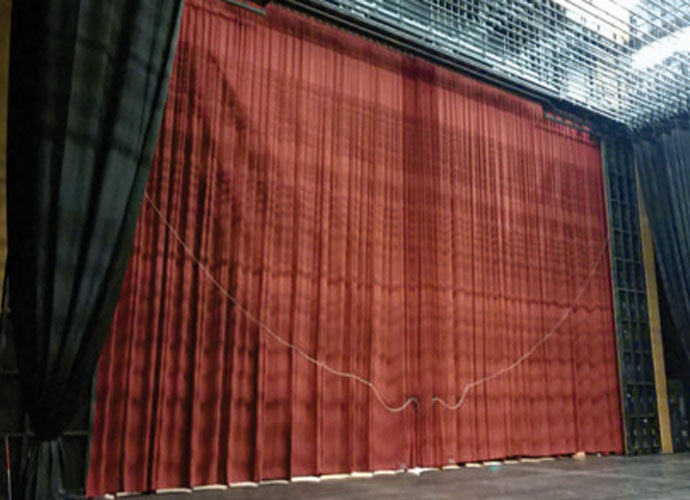
roman blind curtain
The curtain is realized as a single large cloth and is lifted vertically by means of a series of ropes attached to the lower edge of the curtain. The operation is contemporary for all ropes (the lower edge of the curtain is kept horizontal throughout the opening maneuver). Along the whole height of the curtains are predisposed some tubulars behind which keep the fabric perfectly taut.
festoon curtain - venetian opening
The curtain is realized as a single large cloth with both vertical and horizontal richness in order to create the "festoon" effect typical of the Venetian blind. It is lifted vertically by means of a series of ropes attached to the lower edge of the curtain. The operation of the actuation ropes is contemporary for all (the lower edge of the curtain is kept horizontal throughout the opening maneuver).
festoon curtain - austrian opening
The curtain is realized as a single large cloth and is lifted vertically by means of a series of ropes attached to the lower edge of the curtain. The difference between a solution and the other lies in the packaging of the cloth, which can be stretched or draped, and in the actuation of the ropes, which can be contemporary for all (the lower edge of the curtain is kept horizontal throughout the maneuver opening) or differentiated (the lower edge is arranged according to a curved line).
wagner curtain - imperial opening
The curtain is opened from the center: two cords, starting from the central edges of the velvet at a height of 2.00 m about from the bottom and ending at the lateral top, pass through a row of rings, fixed to the fabric and forming a semicircle. Pulling the two ropes the fabric rise up obtaining the proscenium opening free. The upper part is normally connected to a metal support truss. Depending from the height of the curtain and the portion of curtain that one want to see on the scene, they are predisposed coated chains on the upper border of the curtain to facilitate the collection and reduce the overall dimensions.
swag & fly curtain - french opening
The method uses the same movements of the Italian curtain, for the opening, and of the German curtain, for lifting from the ground. The two movements, faster than the Italian, slower than the German, are synchronized by a single command by means of the different diameters of the drum placed in the grid. This system is used when the dimensions of the proscenium and the stage tower do not allow only the Italian movement.
fly curtain - german opening
The curtain rises vertically, until it disappears in the stage tower, in a "guillotine" movement. The drapery is tied to a metallic truss and the whole is lifted by cords that are wrapped around a drum placed on the grid. The simplest version of the system can also be used to raise the backdrops and scenographic draperies in the stage tower.

